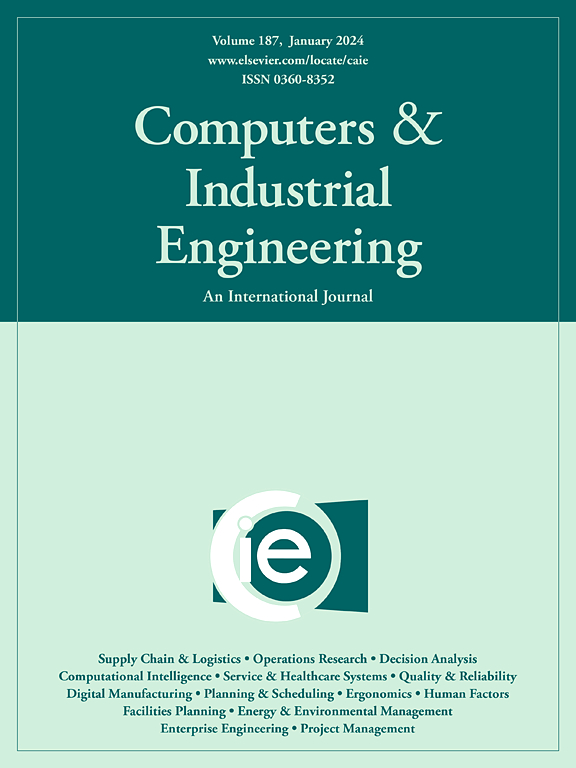IF 6.7
1区 工程技术
Q1 COMPUTER SCIENCE, INTERDISCIPLINARY APPLICATIONS
引用次数: 0
摘要
工业 5.0 的愿景强调以人为本的工业,在这一背景下,人与机器人协同工作的装配线已成为一种创新系统,可将两者的优势结合起来。因此,工业管理者正试图实施协作系统,以利用机器人的一致性及其在危险环境中工作的能力,以及人类的洞察力和适应性。然而,淘汰现有系统并从头开始构建另一个系统的过程既昂贵又耗时。与其建造一个全新的系统,不如根据新情况重新配置生产线,从而使系统能够适应变化。据我们所知,有关协作式装配线的文献研究主要集中在初始安装阶段,而涉及重新平衡过程的研究人员并未将劳动力结构的变化作为重新平衡的原因加以考虑。本研究提出了 "人机协作装配线再平衡问题",以填补文献中的空白。所考虑的问题涉及生产线再平衡的需求,以整合传统和协作机器人作为现有人工装配线的操作员。为了解决这个问题,提出了一种数学建模方法和基于人工蜂群算法的超智能算法,目的是优化周期时间。对文献中的基准问题进行的计算测试结果表明,所提出的算法优于数学建模方法和基本的人工蜂群算法。本文章由计算机程序翻译,如有差异,请以英文原文为准。
Assembly line rebalancing problem with human-robot collaboration and a hyper-matheuristic solution approach
In the context of the Industry 5.0 vision, which emphasises the importance of human-centred industries, assembly lines wherein humans and robots work together have emerged as innovative systems that allow the advantages of both to be combined. Accordingly, industrial managers are attempting to implement collaborative systems that will benefit from the consistency of robots and their capacity to work in hazardous environments, as well as the insight and adaptability of humans. Nevertheless, the process of eliminating an existing system and building another one from scratch is both costly and time-consuming. Rather than constructing an entirely new system, it is possible to reconfigure the line based on the new situation, thus enabling the system to adapt to changes. To the best of our knowledge, studies in the literature on collaborative assembly lines have focused on the initial installation phase, while the researchers who have dealt with the rebalancing process have not taken into account the change in the workforce structure as a reason for rebalancing. This study introduces the Assembly Line Rebalancing Problem with Human-Robot Collaboration as a means of filling the perceived gap in the literature. The considered problem addresses the need for line rebalancing to integrate traditional and collaborative robots as operators in existing manual assembly lines. In order to tackle this problem, a mathematical modelling approach and an artificial bee colony algorithm-based hyper-matheuristic algorithm are presented with the objective of optimising cycle time. The results of the computational tests on benchmark problems adapted from the literature demonstrate that the proposed algorithm outperforms the mathematical modelling approach and basic artificial bee colony algorithm.
求助全文
通过发布文献求助,成功后即可免费获取论文全文。
去求助
来源期刊

Computers & Industrial Engineering
工程技术-工程:工业
CiteScore
12.70
自引率
12.70%
发文量
794
审稿时长
10.6 months
期刊介绍:
Computers & Industrial Engineering (CAIE) is dedicated to researchers, educators, and practitioners in industrial engineering and related fields. Pioneering the integration of computers in research, education, and practice, industrial engineering has evolved to make computers and electronic communication integral to its domain. CAIE publishes original contributions focusing on the development of novel computerized methodologies to address industrial engineering problems. It also highlights the applications of these methodologies to issues within the broader industrial engineering and associated communities. The journal actively encourages submissions that push the boundaries of fundamental theories and concepts in industrial engineering techniques.
 求助内容:
求助内容: 应助结果提醒方式:
应助结果提醒方式:


